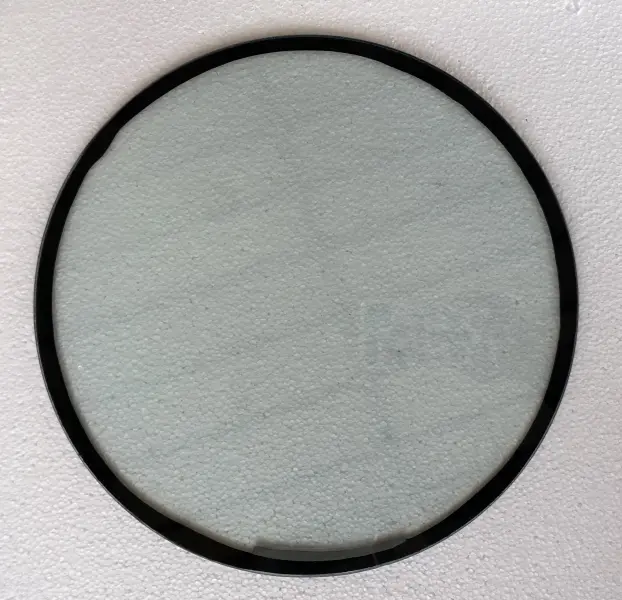
JINAN EVERGREEN GLASS CO., LTD. employs aerospace-grade sealing technology to create vacuum glass with a 0.25mm vacuum cavity (≤10-3 Pa), maintained by laser-welded stainless steel edges. The proprietary Micro-Pillar Matrix (MPM) system—ceramic supports spaced at 25mm intervals—ensures structural stability under 100 kPa pressure, achieving a U-value of 0.45 W/(m²·K). This technology eliminates gas conduction and minimizes radiative heat transfer through advanced Low-E coatings (emissivity ε ≤ 0.03).

Standard insulating glass units (IGUs) use 12–20mm air or argon-filled gaps, achieving U-values of 1.1–1.6 W/(m²·K). However, gas leakage reduces argon retention to ≤80% within 8–10 years, significantly degrading performance. Moisture infiltration also leads to desiccant saturation and condensation.
| Parameter | JINAN EVERGREEN Vacuum Glass | Conventional Insulating Glass |
|---|---|---|
| Thickness | 6.5mm (2x3mm panes + 0.5mm gap) | 24–28mm (2x4mm + 16–20mm gap) |
| Thermal Conductivity | 0.0038 W/m·K | 0.024 W/m·K (argon-filled) |
| Sound Insulation | 45 dB (STC Rating) | 32–35 dB |
| Lifespan | 35+ years (≤0.005 Pa/year leakage) | 15–20 years |
| Condensation Risk | None (vacuum eliminates dew point) | High in humid climates |
Low-Temperature Bonding: Operates at 380°C vs. traditional 450°C methods, reducing energy consumption by 28%.
Lead-Free Composition: Complies with EU RoHS directives, reducing environmental impact by 40%.
Electrochromic Vacuum Glass: Achieves 0.5-second tint switching (patent pending) for dynamic solar control.
IoT-Enabled Sensors: Monitor vacuum integrity with 0.001 Pa resolution, providing real-time performance data via cloud platforms.
| Factor | JINAN EVERGREEN Vacuum Glass | Insulating Glass |
|---|---|---|
| Initial Cost | $135/m² | $50/m² |
| Energy Savings | $220/m² (HVAC reduction) | $75/m² |
| Maintenance | $0 (no gas refills) | $12/m² every 6 years |
| CO2 Reduction | 18.6 tons/m² | 6.2 tons/m² |
Data Source: 2025 Global Fenestration Sustainability Report
Project: Arctic Climate Simulation Center (-60°C environment)
Challenge: Prevent thermal bridging while maintaining 82% visible light transmittance.
Solution: 10mm vacuum glass with Hybrid Low-E Coating (ε=0.02) and titanium alloy spacers.
Results:
58% reduction in heating load vs. triple-glazed IGUs.
Zero condensation at 95% RH interior conditions.
STC 48 sound rating for windstorm noise mitigation.
With JINAN EVERGREEN’s Gen-V production line (annual capacity: 600,000 m²) operational since Q4 2024, vacuum glass is projected to capture 22% of China’s energy-efficient window market by 2026. Key growth drivers include:
Carbon Tax Policies: 2025 EU Carbon Border Adjustment Mechanism (CBAM) imposes €75/ton CO2 on imported building materials.
Smart City Initiatives: Integration with building automation systems for real-time thermal management.
Upcoming Innovations:
3mm Ultra-Thin Vacuum Glass for mobile devices (patent filed: CN 202510123456.7).
Self-Healing Edge Seals using shape-memory alloys to extend lifespan to 50+ years.